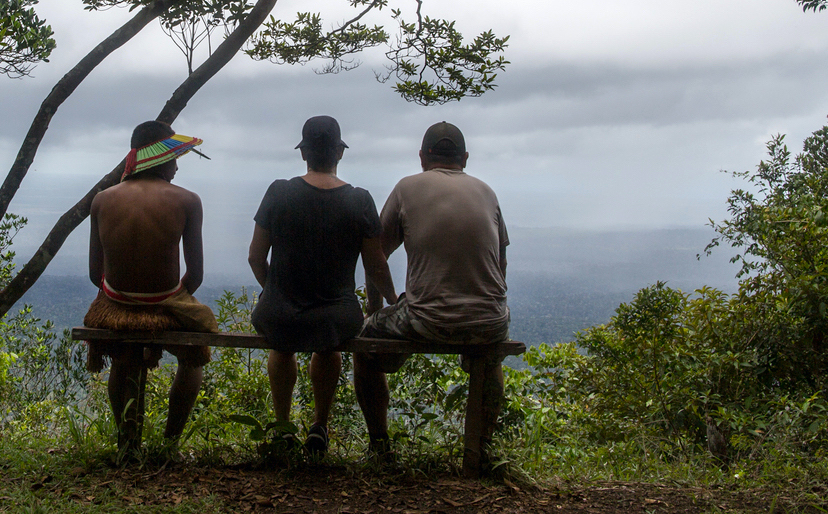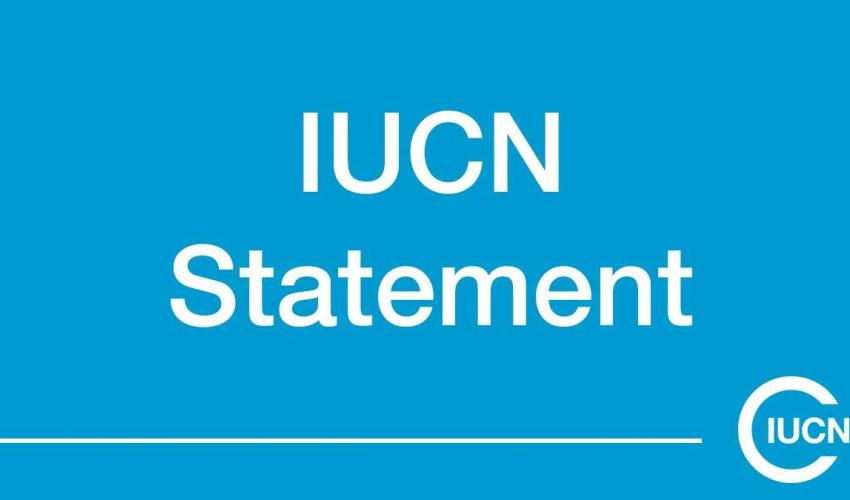How Do We Build Back Better After a Pandemic?
By Kristen Walker Painemilla, Chair of the IUCN Commission on Environmental, Economic and Social Policy & Senior Vice President of Conservation International's ' Center for Communities and Conservation'
Transformation, an equitable recovery with social justice, and climate change are all intimately intertwined.

Pataxós Indians guide tourists on a trail in the national park of Monte Pascoal. The Pataxós are a Brazilian indigenous people, live mostly in the Barra Velha Indigenous Land of Monte Pascoal, south of the municipality of Porto Seguro. Monte Pascoal National Park (Portuguese: Parque Nacional e Histórico do Monte Pascoal) is a national park in the state of Bahia, Brazil. The park is classified as IUCN protected area category II (national park). It has the objectives of preserving natural ecosystems of great ecological relevance and scenic beauty, enabling scientific research, environmental education, outdoors recreation and eco-tourism.
Photo: Flavio Forner / Conservation International
We are two months into 2021, and it’s still hard for much of the globe to think about what happens after the pandemic, hard to envision what our future and the future of the planet will look like.
We are seeing glimmers of light with the launch and dissemination of vaccines worldwide. This will take time. We are facing issues of equity, but little by little countries and peoples will see relief, as least in part.
The Big Picture: COVID-19 arrived during a pivotal moment in the world. It continues to sweep across the world, spreading from the developed world to the global South. With rural populations making up three-quarters of the world’s poor, the impact of the pandemic has been devastating in developing nations, especially among indigenous peoples.
Our world has changed considerably with COIVD-19. It has also provided many with time to reflect on what’s most important in our lives, allowing us a unique opportunity to reflect on how we work, engage and protect the planet. We have a lot to do and there is no time to waste!
We have the opportunity to be transformative.
The COVID-19 pandemic is forcing us all to re-think the status quo!
- We have a unique opportunity to transition towards a sustainable wellbeing economy centered around people and nature.
- We can think holistically around land, food and health systems
- Nature based solutions promote green and resilient economies.
Recovery should be equitable and just
- The loss of biological diversity has negative impacts on a wide range of issues, human rights such as the rights to life, food, housing, health, water and sanitation, and culture. COVID-19 has amplified all these issues. A healthy ecosystem is foundational for the full enjoyment of a wide range of human rights.
- We must make sure that transformation and recovery is done through a social justice lens
- To build back better, more efforts are needed to address racial and class disparities in the recovery itself.
The recovery has to be green
- The ‘Climate clock’ continues to tick; while we had a brief dip in emissions from shutdowns around the world, countries are starting back up with emissions increasing again.
- An equitable and successful economic recovery can align with other long-term needs for a sustainable future via Nature-based Solutions, such as reducing emissions, protecting biodiversity, creating more circular supply chains, and generating jobs in new industries.
In 2020, CEESP launched the #BuildBackBetter Dialogue series to generate dialogue and recommendations for the post-pandemic era. To date, CEESP has held six dialogues ranging in topics from spirituality to environmental change. We expect to hold at least six more prior to the IUCN World Conservation Congress to help create a road map over the next quadrennium that supports our CEESP response and the IUCN Nature 2030 agenda. CEESP will continue to push for transformative change, equitable recovery and social justice and to address the climate crisis over the next four years.



